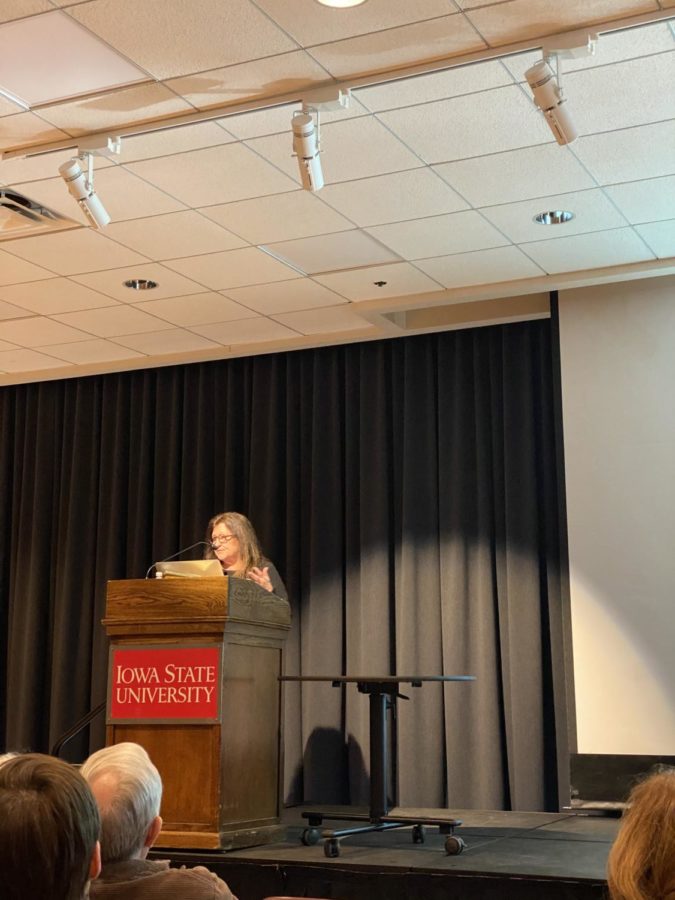Abolitionist and suffragette discussed in lecture
Tricia Foley stands onstage in the Sunroom on Wednesday evening to lead an educational lecture in honor of Women’s History Month over “Suffragette, Editor, Abolitionist: The Story of Mary Louise Booth.”
March 11, 2020
Iowa state students and Ames community members learned the history of Mary Louise Booth, a writer, historian, editor, translator, abolitionist and suffragist at a lecture Wednesday.
The lecture “Suffragette, Editor, Abolitionist: The Story of Mary Louise Booth” was presented by Tricia Foley, a self-acclaimed home designer and restoration expert, lifestyle authority and published author. Her lecture was centered around suffrage activist Mary Louise Booth for whom Foley has a novel about named “Mary L. Booth: The Story of an Extraordinary 19th-Century Woman.” Foley partially pursued her interest in Booth, a most famous individual due to their unique likeness.
Booth was a child prodigy originating from a plentiful family whose earlier generations came from wealth and once owned much of Long Island. She lived from 1831 to 1889 when she died at the age of 57 years old. Her father John Booth came to America in 1649, while her mother was the granddaughter of a refugee of the French Revolution.
Named “Yaphank, New York Famous Daughter” for her extreme intelligence, it was no shock Booth quickly excelled in her education, especially during her attendance at Miller Place Academy, which boasted many of the most intelligent scholarly professors of the time, Foley said.
At 5 years old, Booth completed reading the Bible and as a child Booth could translate French, which she had taught herself. In 1855, at 13 years old, the Booth family moved to Brooklyn, New York, where Booth helped to teach at the school her father held employment at.
From 1856 to 1857, Booth was writing and editing for New-York Daily Times, Emerson’s Magazine, The New Path Art Journal, The Clock and Watchmakers Manual. Booth also held a slew of society memberships with the anti-slavery society, society for the advancement of the truth in the art, Secretary Alpha Club and more. She was able to translate over seven different languages for publication in her life. Susan B. Anthony regularly wrote to Booth, her beloved friend, requesting her aid to speak in events to which Booth continuously declined.
“I’ve read in a number of letters and articles from the time,” Foley said. “She felt she could influence women to be stronger and take a stand and make her point through her writing and that’s what she did. She didn’t care about being famous and it’s odd that she was then and she’s not now but that wasn’t an objective of hers.”
Within her first year running Harper’s Bazaar she wrote controversially each month about the issues of women’s movement over a variety of topics including champions of women’s suffrage, women in work and she gave suggestions about all the different careers that women could have and she also published the salaries of all the journalists, doctors, teachers, lawyers and all the professions to make a point of the inequity in pay for men and women in her first year. She served in her role at Harper’s Bazaar for twenty years before her passing.
To learn more about Foley’s novel as well as the history of Booth visit marylbooth.com.

















